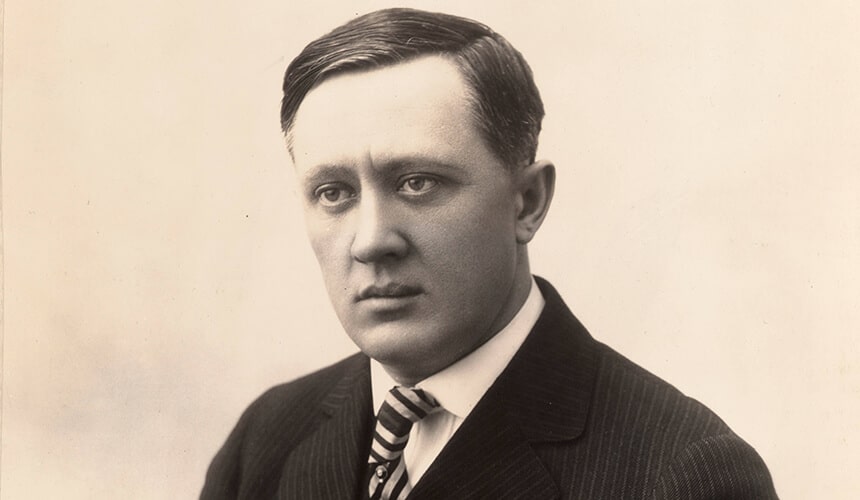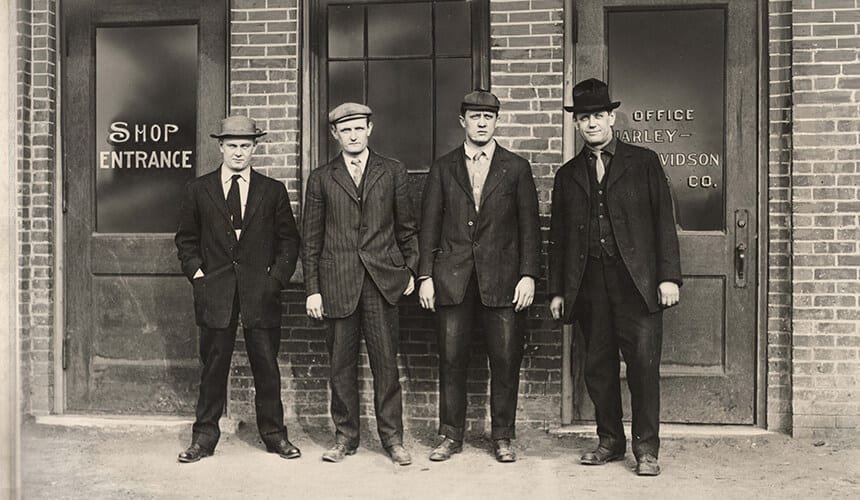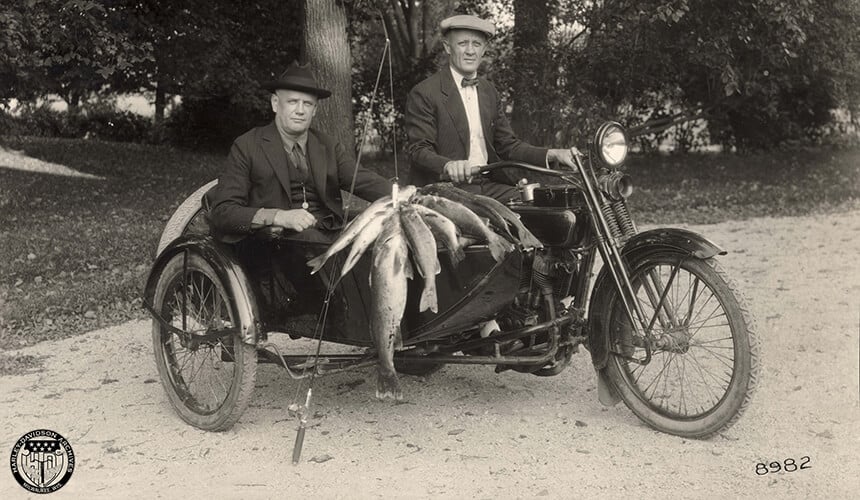Harley-Davidson and William Harley
Hog Wild Engineer
When three Milwaukee friends first put together a motorized bicycle, it needed a name. Since the motorbike was originally his idea, William Harley BA1907 got top billing. They called it a Harley-Davidson.
Before they co-founded what would be the world’s largest motorcycle manufacturer, Harley and Arthur Davidson were next-door neighbors on 38th in Milwaukee, where they spent many childhood hours tinkering with bicycles and engines in the Davidson family basement.
Taking his interests to work at age 15, Harley began as a cycle-fitter and draftsman for a high-end bicycle maker, Meiselbach Manufacturing Company. Soon, he joined Davidson to work at metal-fabricator Barth Manufacturing Company.
Along with Davidson’s brother Walter, a mechanic, the three combined their industrial knowledge to sell their first motorcycle in 1903. That same year, seeking more engineering know-how, Harley enrolled at the University of Wisconsin.
Harley focused on internal combustion engines, even though the School of Engineering labs had few, if any, gas engines to study. The lone course in gas engineering was a three-fifths elective.
To pay for college, Harley waited tables, worked as a draftsman for a Madison architect, and created lab equipment for the Department of Psychology. As a senior, he was part of a group selected to test a new steam turbine for Chicago’s Commonwealth Edison Company.
From The Park
In cofounding Harley-Davidson, Harley created a symbol of freedom, enterprise, and the pursuit of the open road.
Harley earned his mechanical engineering degree with honors, and then he returned to Milwaukee, ready to build on a design he had created as a student. This would become his patented two-cylinder, V-twin engine, capable of speeds up to 60 miles per hour.
Just three months after his graduation, the Harley-Davidson Motor Company was incorporated. Harley was chief engineer and treasurer.
An accomplished and enthusiastic motorcyclist, Harley was the company’s ideas man for more than 30 years. One of his 90 patents was the 1916 “step-starter,” which eliminated pedals and moved motorcycles into a new category.
On the business side, Harley led H-D’s sales of almost 75,000 cycles to the U.S. War Department during World Wars I and II. As more executive duties came under his watch, he encouraged UW engineering students to prepare dually for a career in business. His advice: practice public speaking.
A lifelong Wisconsinite, Harley embraced his love of wildlife as a hunter, fisherman, artist, and photographer. He remained H-D’s chief engineer and treasurer until his death in 1943.
 60° F
60° F

